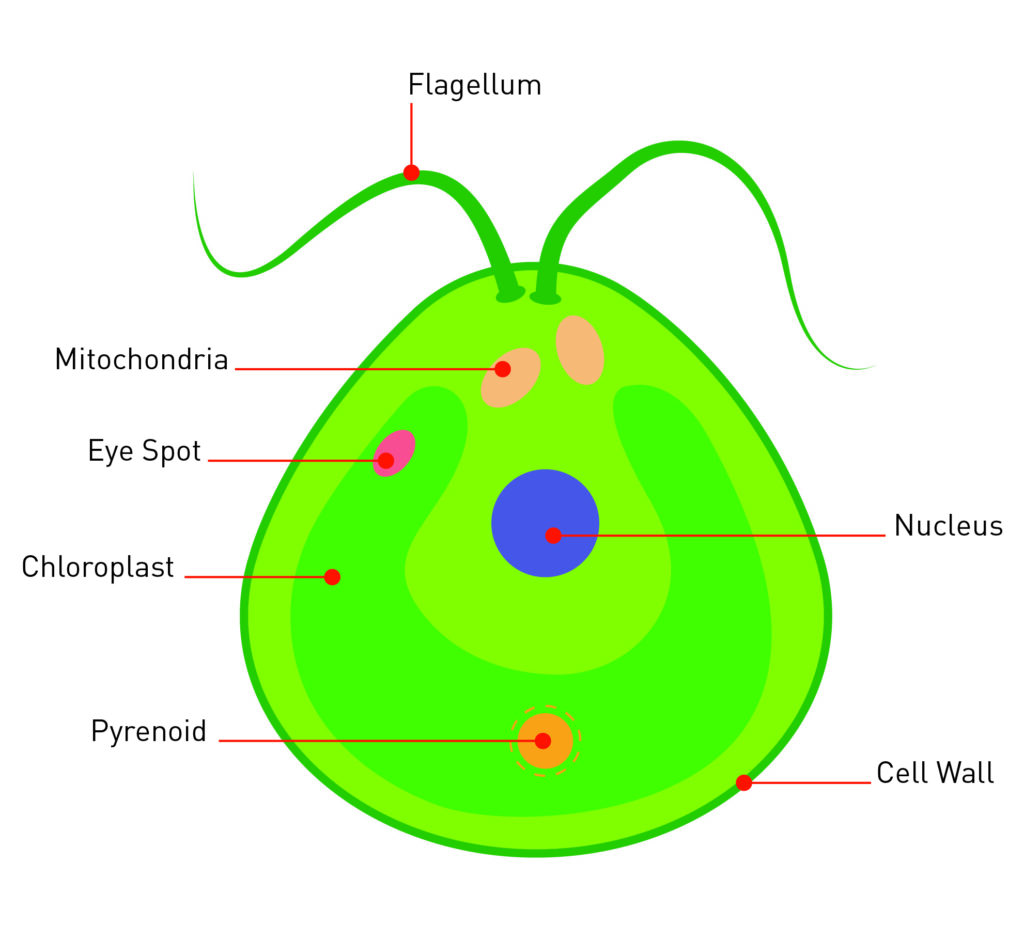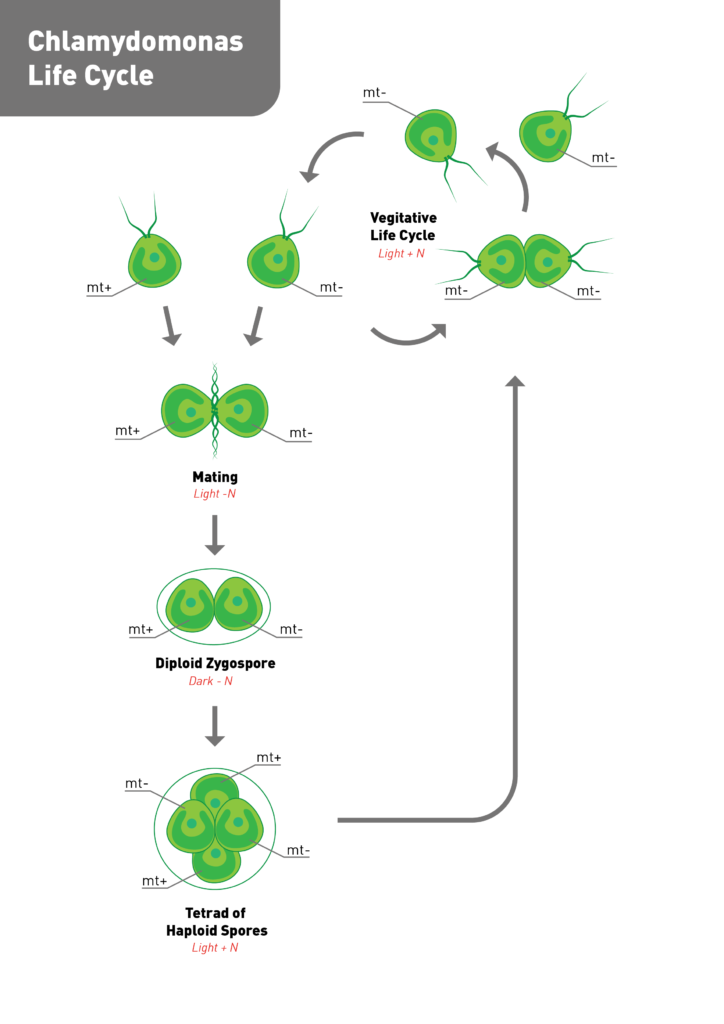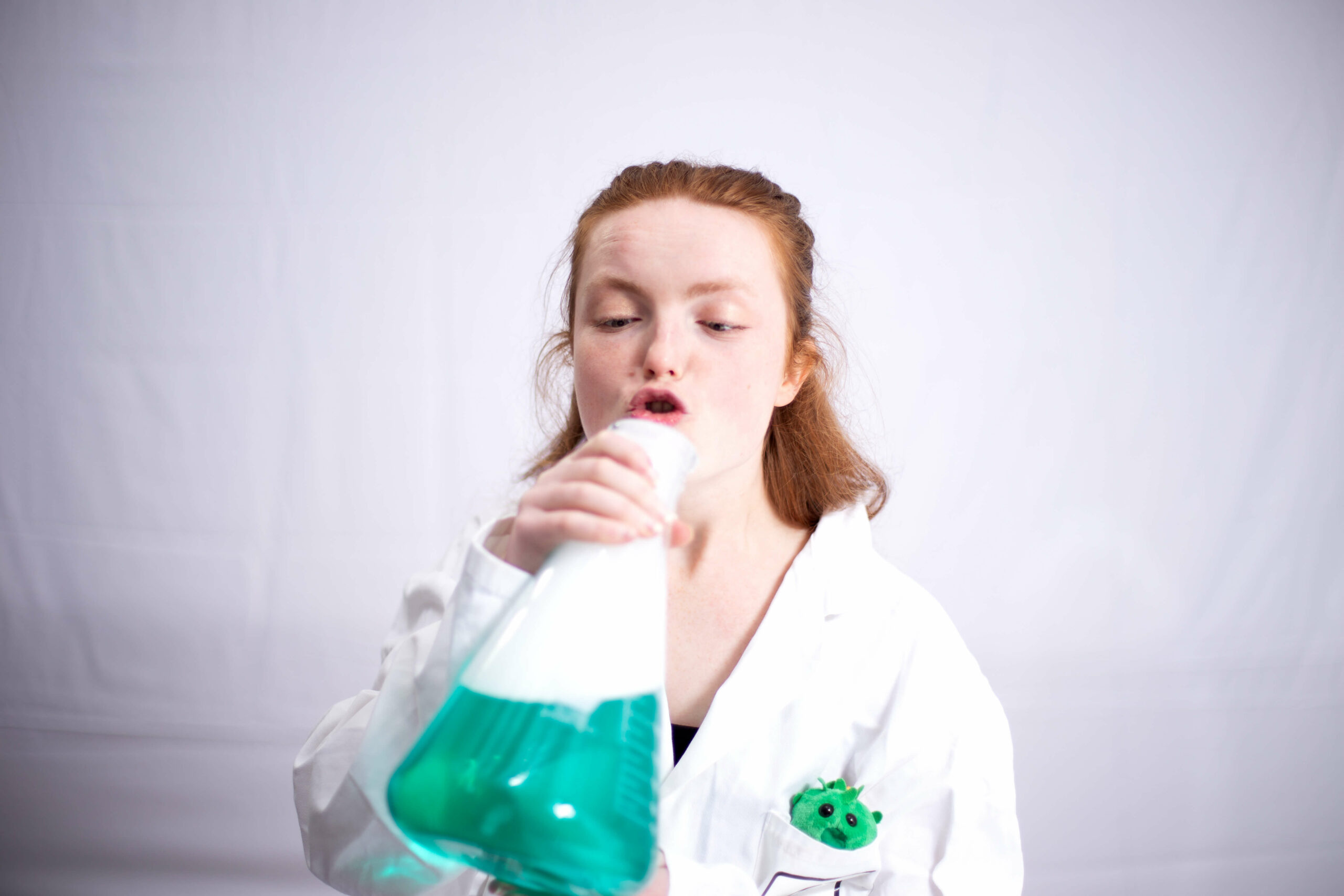What is Chlamydomonas?
A Powerful Green Algae Research Model Organism
Introduction to Chlamydomonas reinhardtii
Chlamydomonas reinhardtii, often referred to as Chlamydomonas or “Chlamy”, is a unicellular green algae around 10 – 22 μm in diameter (Chlamycollection.org, 2025). Chlamydomonas comes from the Plantae kingdom. Both land plants and animals evolved from green algae-like organisms; C. reinhardtii retains key features of this ancient microorganism. That is only one reason why Chlamydomonas is such a powerful plant evolution model organism. Chlamydomonas also have great industrial potential for wastewater purification and biofuel production.
Why is Chlamydomonas reinhardtii a model organism?
Using a simple unicellular model organism, rather than studying a complex multi-cellular organism directly makes research far easier. Chlamydomonas has a small genome, 120 megabases over 17 chromosomes; the genome is haploid and contains very few gene duplicates. This genome structure is a crucial advantage as it means that links between mutation and observable effect are easily identifiable. This green algae is of evolutionary significance, sharing genes with both plants and animals. Thus, C. reinhardtii is thought to be comparable to the last common ancestor between these eukaryotic lineages (Merchant et. al., 2007). In algae research environments, Chlamydomonas has a rapid reproduction cycle and is easy to grow with a collection of well developed genetic manipulation tools. This makes Chlamydomonas perfect for studying gene function as a plant model organism (Cross & Umen, 2015).
What is the intra-cellular anatomy of Chlamydomonas?
Chlamydomonas demonstrates similar cellular anatomy to both plant and animal cells. It has 2 flagella of equal length which the cell uses to swim, in a breaststroke-like motion, towards light detected by the eyespot. This phototaxis ensures optimal light conditions for efficient photosynthesis by the chloroplast. The “cup shaped” chloroplast encases the nucleus from the base of the cell upwards providing the cell with energy (The Chlamydomonas Sourcebook, 2023).
Both photosynthesis and the chloroplast are highly conserved in the plant kingdom, so conclusions made from Chlamydomonas are often reflected in land plants. Their flagella are also used to model other organisms with similar projections, including many human cells (Marshall, 2024).

What is the algal Life Cycle?
Chlamydomonas reinhardtii replication and mating is driven by the presence/absence of nitrogen and light. Green algae replicates asexually via mitosis remaining in its haploid state during the vegitative life cycle. However, during nitrogen starvation conditions, the algal cell is signaled to reproduce sexually instead. During meiosis the flagella pull cell gametes of the opposite mating type (mt+ and mt-) together. The haploid gametes fuse into a diploid cell which develops a thick protective cell wall. This form is more resilient to low nitrogen environments and the diploid cell enters a dormant state. When nitrogen returns, the diploid zygospore divides into 4 haploid cells to form a tetrad held together by a membrane. This membrane breaks apart, releasing the 4 daughter cells back into the environment. These daughter cells return to asexual replication.

Chlamy Applications: Algal Biofuel production and wastewater treatment
Algal research groups are exploring C. reinhardtii as a sustainable solution for both clean energy and wastewater treatment. The fast growing C. reinhardtii is able to convert sunlight and CO2 into energy. Under environmental stress the algal cell metabolism stores more of this energy as lipids. These lipids then account for ~40% of the dry weight and are the precursor to biofuel (Scranton et. al., 2015).
Chlamydomonas can also remove inorganic nitrates, phosphates, and heavy metals from wastewater (Vilchez et.al., 2001). If these are not removed from wastewater before it enters the environment the result is an excessive overgrowth of algae and other aquatic plants, ultimately destroying the balance of the ecosystem. Chlamydomonas has been reported to remove 88% of phosphate and 86% of nitrates from paper industry wastewater. Using this microalgae to treat wastewater restores the ecological balance and produces biofuel simultaneously (Bellido-Pedraza et. al., 2024). Double Climate Win!
Chlamy Applications: Cultured meat production
Cultivo2 have developed a dual compartment system to symbiotically co-culture C. reinhardtii with animal cells with the intent of lowering the industrial costs of producing cultured meat alternatives. The animal cells produce CO2 and ammonia as waste products which the algae takes, returning oxygen and glucose. This symbiotic relationship makes the animal cells cheaper to grow, aiming to reduce the cost of cultivated meat on the consumer. (Cultivo2, 2024)
Powerful genetic manipulation techniques in Chlamydomonas
With striking similarities to plants and animals in addition to a myriad of industrial applications Chlamydomonas is a very powerful organism to study. Loss of function assays and tetrad dissection are just two of the countless genetic techniques now available, thanks to the incredible work of researchers. These algae scientists recognised the importance of this organism and have established Chlamydomonas as a powerful model through high throughput automation.
Find out more about Chlamydomonas Research
Discover how scientists are studying Chlamydomonas genetics to fight the climate crisis!

Fiona Kemm MRes | Scientist
Fiona is a vital member of our Research team, rigorously testing our robots to ensure scientists don’t break them. With no prior robotics experience, she was the ideal guinea pig for our world-class user experience and support. Holding a BSc in Biochemistry and an MRes in Molecular Microbiology, Fiona brings extensive hands-on expertise she applies across departments, supporting both users and internal teams. From writing insightful web articles to specialising in SQWERTY, Fiona ensures our innovations perform flawlessly, helping customers focus on the creative and interpretive aspects of science that can’t be automated.